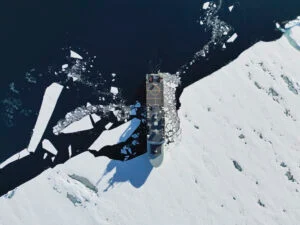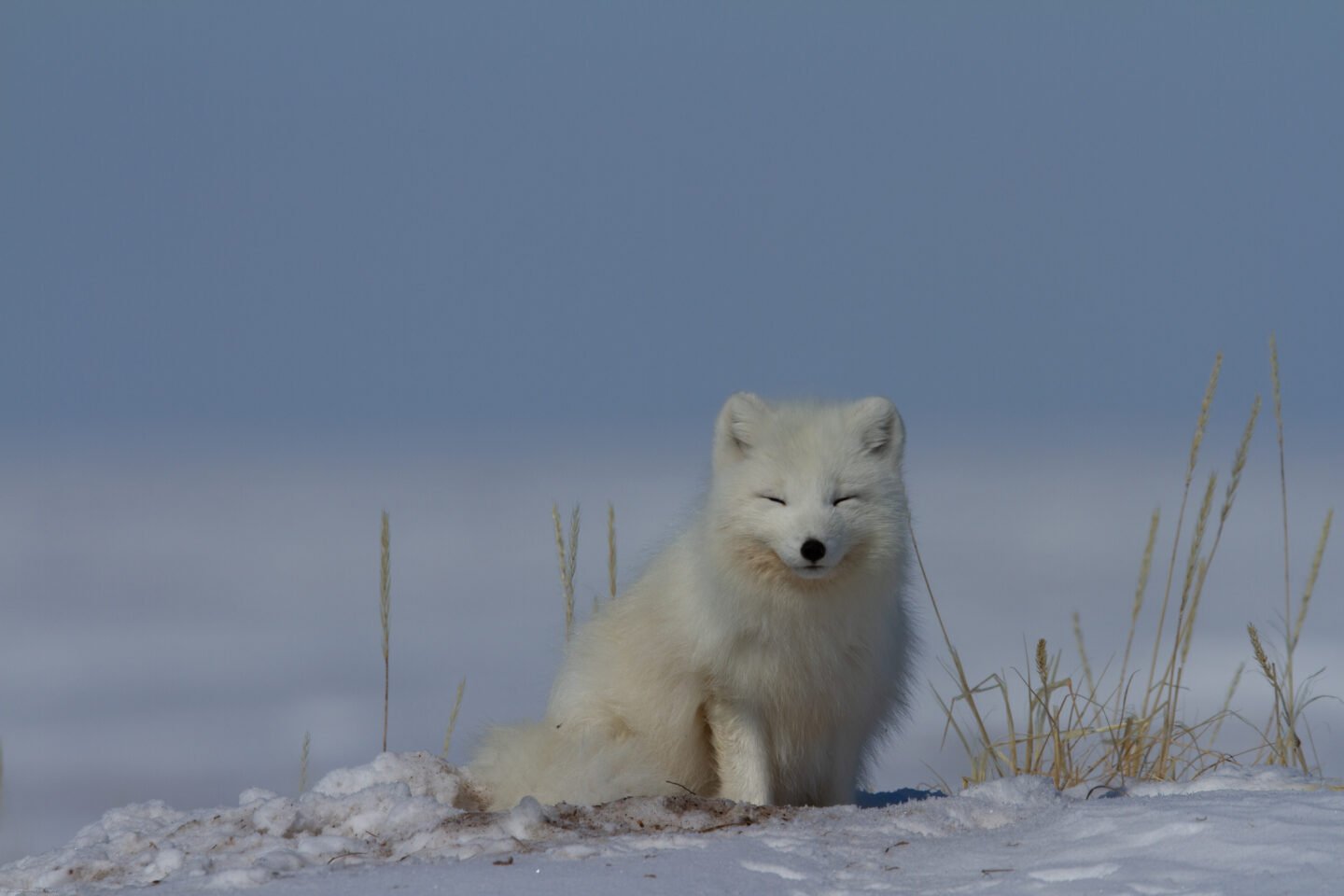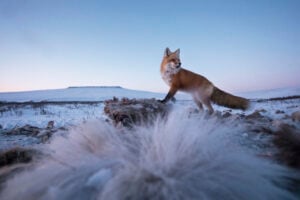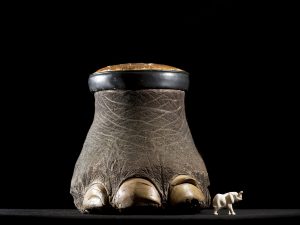
People & Culture
On thin ice: Who “owns” the Arctic?
As the climate heats up, so do talks over land ownership in the Arctic. What does Canadian Arctic Sovereignty look like as the ice melts?
- 4353 words
- 18 minutes
Kids

As one of Canada’s most beautiful mammals, the Arctic fox is well-known for its white fur which is why it’s often referred to as the snow fox.
Common name: Arctic fox
Scientific name: Vulpes lagopus
Inuktut name: ᑎᕆᒐᓐᓂᐊᖅ (Tiriqaniaq)
Type: Mammal
Diet: Omnivore
Group Name: Skulk or leash
Weight: 3 to 7.5 kilograms
Length: 75 to 115 centimetres (About the size of a domestic cat)
COSEWIC Status: No status
Arctic foxes are great architects: to nurse her whelps (baby Arctic foxes), a female Arctic fox digs burrows that can go 1.8 to 3.6 metres underground, with as many as 100 entrances. That’s a lot of digging!
The Arctic fox is the smallest member of the canid family in Canada. Despite being in the same family as large wolves, the Arctic fox measures only 75 to 115 centimetres long. Even then, one-third of its length comes from its bushy tail. This fox is about the same size as a big house cat or a small dog, but don’t be fooled – it is not a pet!
Arctic foxes can change the colour of their coats depending on the season, and they are the only member of the canid family that can do so. During summer, their coat is brown or grey with a light-coloured belly. During winter, an Arctic fox’s fur turns thick and white. This change gives them camouflage throughout the year, making it harder for their prey to spot them while they’re on the hunt.
Their fur also helps them stay nice and warm; the Arctic fox has the warmest fur coat of any animal found in the Arctic and can endure temperatures as low as -50 C. Their other characteristics, such as short legs, short muzzles and small rounded ears, help them battle the cold by reducing the amount of body surface area exposed to heat loss. Less body = less cold!
The Arctic fox is both a hunter and a scavenger. To find prey during the winter, it uses its strong senses of hearing and smell to detect small animals that are active underneath the snow. Its prey consists of rodents, birds and fish – it will even eat vegetables if they are available! Arctic fox parents have a lot of mouths to feed: the average litter size is 14 whelps – the largest recorded litter of any wild mammal in the world!
In Canada, the Arctic fox is found in the northern boreal region up to the Arctic, from James Bay to the top of Ellesmere Island. Around the world, Arctic foxes live in the circumpolar Arctic, including Greenland (Denmark), Iceland, Finland, Sweden, Norway and Russia.
Each Arctic fox has its own home range, extending up to 25 square kilometres. They are very mobile and can travel large distances over both land and sea ice.
Are you passionate about Canadian geography?
You can support Canadian Geographic in 3 ways:

People & Culture
As the climate heats up, so do talks over land ownership in the Arctic. What does Canadian Arctic Sovereignty look like as the ice melts?

Wildlife
Wildlife photographers on the thrill of the chase — and the importance of setting ethical guidelines

Environment
The uncertainty and change that's currently disrupting the region dominated the annual meeting's agenda

Wildlife
An estimated annual $175-billion business, the illegal trade in wildlife is the world’s fourth-largest criminal enterprise. It stands to radically alter the animal kingdom.